How to decipher badges for washing clothes?
Content:
The first thing that every woman does when she comes home with a new thing - puts it on and examines herself in the mirror. Once again, you can’t forbid admiring yourself to the fair sex, but the second thing to do is to study the icons on the clothes for washing, the decoding of some is not always immediately clear. For example, a hand dipped in a basin with water means a hand wash, and a basin indicating the temperature indicates how hot the water can be.
These wash icons are easily interpreted, but if we talk about others, the fantasy sometimes refuses to even suggest what they can mean. However, all the laundry icons will have to be explored. Nobody wants the first wash to be the last thing for a thing? And if so, we look for labels on things and carefully read how to organize the right care for them.
Where is the shortcut hidden?
At the time when the first industrial manufactories began to appear, labels were born. Their goal was to convey to the buyers of clothes the name of the manufacturer. Then, caring merchants began to place signs of clothing care on them. This tradition has survived to the present day. Therefore, it is not difficult to find a label with cleaning recommendations on any item of clothing.
The tag on which the washing symbols are located is located in different places for different things. For example, in jeans, it is located in the seam at the hip level, in knitted sweatshirts and knitted cardigans - in the side seam, in T-shirts - behind the collar or in the side seam. Moreover, even underwear has labels: their location on the panties is in the side seam, on the bras on the left, on the “back” strap. This proves once again that every thing needs specific care.
The label is made of a special material that does not interfere with clothing: it does not rub or prick. And at the same time, this useful fabric insert at any time will tell you how to wash, iron and otherwise care for the thing. An exception is made only for vests and sliders for the smallest. On these clothes you will not find labels. Designations for washing are indicated on special stickers that are removed during preparation before the first wear.
Tip: as a rule, labels can be made of two types of fabric - very soft and more rigid. If the label needs to be removed, remember: only those that are made of soft cloth are cut off (they sometimes even bear the cut mark - open scissors). A stiff label with a careful movement breaks out of the seam. If you cut it off, the residue will definitely rub.
How to read shortcuts?
There is nothing complicated in figuring out what this or that marking means. It is enough to carefully look at the conditional symbols in general and find a pattern. And as you know, what is clear is easy to remember. Therefore, after studying the icons, the manufacturer’s recommendation regarding clothing care will be read “one-two”.
Conditional symbols are of five types and can designate respectively five different actions to which clothes can be exposed:
- Dry cleaning. Its designation is a circle: empty, with a letter or crossed out.
- Drying. Its symbol is a square, on which the decoding is applied in the form of additional signs explaining its features.
- Whitening. The sign of this operation is a triangle.
- Ironing Its symbols are irons, which indicate the temperature at which the thing should be ironed. Also, this icon indicates whether the clothes can be steamed.
- Wash. Its icon is a basin with water and can give the following information: is it possible to wash the machine or if the product provides only manual cleaning, what temperature should be water, features of extraction and mechanical processing.
In addition to describing the specifics of the modes, there are symbols designed to prohibit or mitigate this or that action. For example, if you cross out the basin with water, it will mean that washing is prohibited, and if you put a cross on the circle, you get a ban on dry cleaning. The stripes under the icons soften the action: one strip - gentle mode, two stripes - delicate mode.
Tip: if you need an urgent decryption, a table will help in which the symbols and their descriptions are collected.
Detailed description of badges on clothes + recommendations
- Drying.
If the washing machine is equipped with a drying function, then when choosing its mode, you should focus on the corresponding value (“box”) on the label. A square with a circle inscribed in it allows drying in a special drying chamber. The same sign, but crossed out, indicates that the dryer must not be used. The points inside the circle in the permitting sign indicate the temperature during drying - the more there are, the higher the temperature value can be.
Also, under the icon "drying allowed" may be a dash or even two. They indicate gentle and enhanced drying modes. This means that if drying is done in the washing machine, you should choose a gentle programmed drying mode or lower the temperature to the minimum value. Icons describing the drying conditions of the product also regulate normal drying, without the use of a drying chamber. Some things can be dried vertically on a rope or on a special metal dryer (a box with a semi-oval on top).
The sign in the form of a square with a horizontal line in the middle indicates that after washing the thing should be laid out on a flat horizontal surface. As a rule, this applies to knitted products from wool and other natural materials. Three vertical stripes in a square warn that the item is not wrung out after washing and dried in a straightened form. Such marking is found, for example, on children's "puffed" hats and mittens made of polyester, on down jackets.
A square with two inclined stripes in the upper left corner means that drying in the sun for these things is prohibited. This applies to woolen, silk products, clothing from synthetic knitwear. Also, in bright sunshine, it is not recommended to dry bright colored things, since they fade from this.
- Dry cleaning.
These conventional signs are needed more for dry cleaning workers than for those who wear it. They regulate the possibility of cleaning with chemicals and specify some substances. The most important sign for consumers is dry cleaning. If he is on the label, it means that you will have to solve problems with stains on your clothes yourself.
- Whitening.
If a thing needs whitening, be sure to look at the symbol in the form of a triangle. A pure triangle indicates that the fabric will withstand any bleaching, the crossed triangle is a complete ban on any bleaching agent. A triangle with a chemical designation of chlorine (Cl) inside provides for the use of chlorine-based products. A triangle with two sloping features located near the left side tabs chlorine-based bleaches, while other bleaching agents may well be used.
- Ironing
Before ironing, pay attention to the “ironing” icon on the label. Depending on the information, it must be manually configured for the iron. Namely, you should set the correct temperature and, if necessary, disable the steaming function (if the icon shows an iron with a crossed steam stream). The temperature of the soleplate is selected based on the type of fabric.The lowest temperature (100 ° C) is set for nylon, polyamide, acetate, acrylic, nylon and is indicated on the label with one dot inside the “ironing”. Two points - this is 150 ° C - for viscose, silk, wool. Three points - 200 ° C - for cotton and linen. If the iron does not have a designation in degrees, it is convenient to navigate precisely by points.
- Wash.
This is the most understandable sign, it is most often paid attention to. A basin of water shows at what temperature a particular item should be washed. Sometimes the temperature is indicated not by numbers, but by points: 1 point corresponds to 30 ° С, 2 points - 40 ° С, 3 points - 60 ° С. If the pelvis is crossed out, the product must not be washed. If the tag shows a basin with a hand lowered into it - for clothes, a manual washing mode is preferable. The crossed-out twisted linen on the label warns that this item is not recommended to be twisted and wrung out. That is, when washing in a washing machine in a mode selected depending on the other characteristics, a washing cycle and rinsing should be present, and the spin should be turned off.
As mentioned above, under the usual icons there can be one or two horizontal lines, which mean the application of the softening mode. Most often, these additions are present on the icons governing washing. If it is carried out using a washing machine, the standard program settings should be adjusted. Namely, reduce by 200-300 turns (one line - gentle washing) or select the delicate washing mode and set the turns to the minimum value (two lines - delicate washing).
The iconic method for describing clothing care conditions is convenient and rational. A small label allows in any situation to know exactly how to wash, dry and remove stains from clothes. By meaningfully reading the signs and their decoding, you can be sure that your favorite clothes are under competent protection.
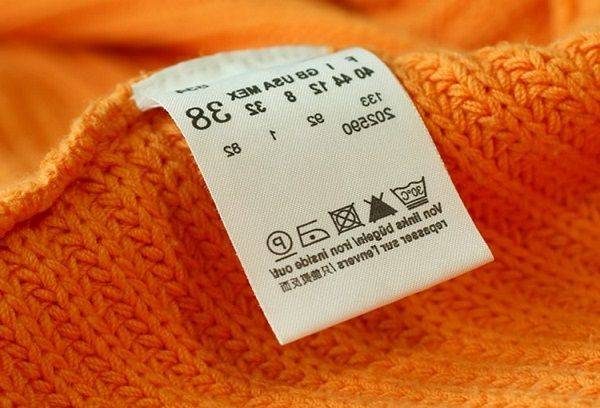
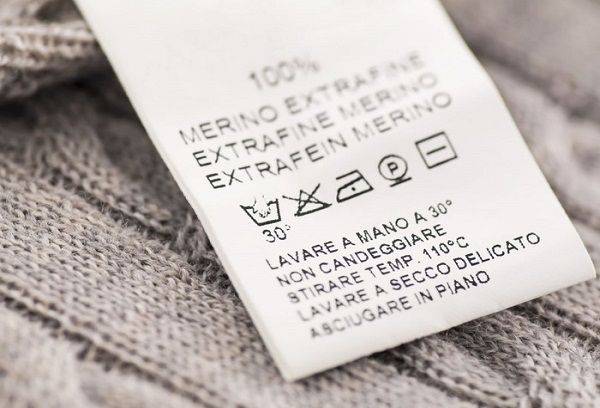
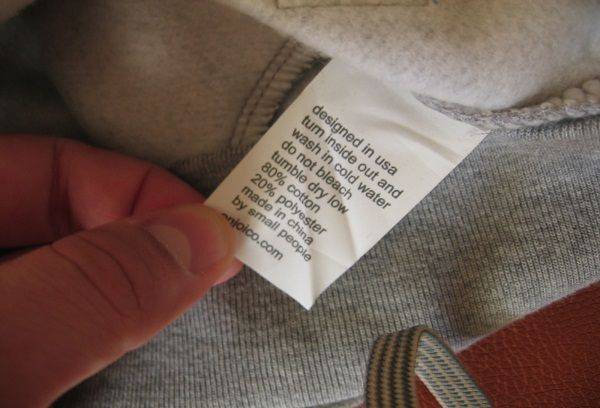

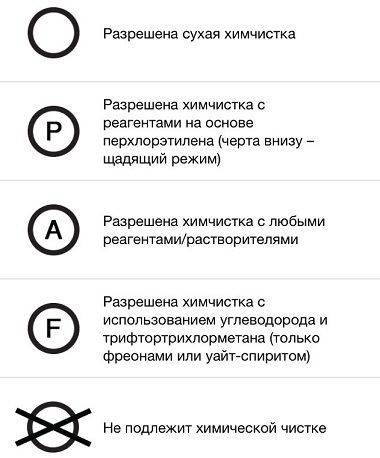
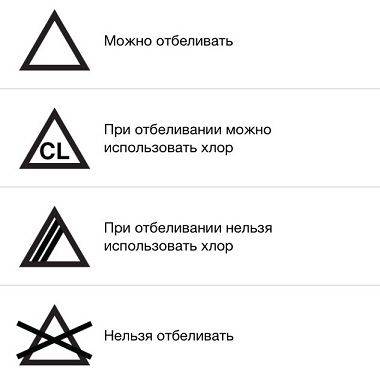
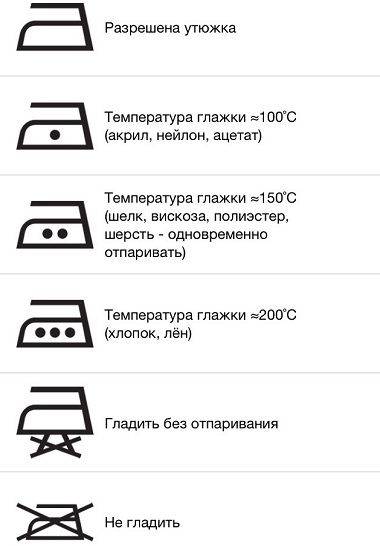

I wash all things in the machine at 30 degrees, while there were no unpleasant situations. Why bother with these icons at all.
Before that, I always cut the labels before wearing and washed things as my intuition prompted me, I remembered only the composition of the product. But now I understand that there are more subtleties in the care of clothes, I will now be more attentive and keep the labels.
I also wash things at 30 degrees in the delicate mode or the hand wash mode and the spin is maximum 600, sometimes 400.
At higher temperatures, only bedding and towels. My machine has a water temperature of 95 degrees, so I think that it can be washed in almost boiling water? I only think of a very oily greasy dishcloth, which until this year the two had not been washed. Nothing more)